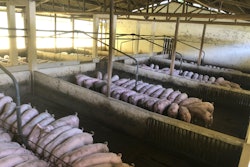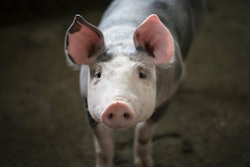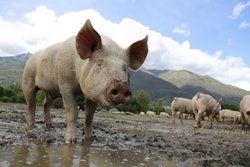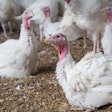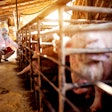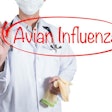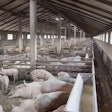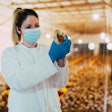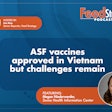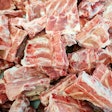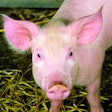
While studies have demonstrated thepotential for swine viruses such as African swine fever to survive in feed ingredientsfor weeks or potentially months at a time, it's difficult to know how common contaminated feed really is. That means biosecurity may be the best policy when it comes to preventing the spread of disease in feed, according to researchers from the University of Minnesota.
According to一篇新论文reviewing existing research on swine viruses in animal feed, the lack of surveillance and monitoring of animal feed for viral contamination means we don't really know how often feed is responsible for the transmission of disease. Overall, the risk seems to be low; a study of porcine reproductive and respiratory syndrome (PRRS) and porcine epidemic diarrhea (PED) virus outbreaks in North Carolina suggests that farm-to-farm proximity, pig movement between farms, pig transportation vehicles and feed delivery vehicles are the contributing factors responsible for most viral outbreaks, said Gerald “Jerry” Shurson, a professor of animal science at the University of Minnesota and the lead author on the paper.
But the risk of feed contamination is not zero, he said, and it may be difficult to pinpoint or even guess where the contamination may come from. While some feed ingredients such as soybean meal and spray-dried plasma have been thought of in the industry as particularly high risk, the real-life risk may vary considerably when you consider a broader swath of ingredients and viruses. African swine fever (ASF) virus has been shown to survive in choline chloride, for example, but not in vitamin D. PED virus may survive in both, while swine influenza virus survives in neither, Shurson said. And avoiding imports of all ingredients from countries with active outbreaks is impractical in a global economy, he said.
Popular strategies for mitigating potential contamination in imported feed ingredients also came up somewhat short in the University of Minnesota review. Many chemical mitigants only partially deactivate the viruses they have been tested on, raising questions about how much virus needs to be eradicated from feed to render it safe for animal consumption. And while holding ingredients at high temperatures has become a popular theoretical treatment for the control of the ASF virus, the temperature required to deactivate the ASF virus exceeds the boiling point, Shurson said.
Shurson also noted that the studies they reviewed on feed mill decontamination also found that most strategies for eradicating viral contamination from a feed mill were not entirely effective.
All that, Shurson said, would point to biosecurity as the likely winning strategy for preventing viral contamination of animal feed.
“Better to prevent it than figure out what to do with a contaminated ingredient when it comes in,” Shurson said.
Biosecurity protocols across the animal production industry are improving, Shurson said, but “could still be improved dramatically.” For example, feed ingredients may be loaded into shipping containers with little regard to the containers' previous cargo, stored on reused wooden pallets, or loaded into trucks that haven't been cleaned with disinfectants proven to be effective against bacteria and viruses.
“It's these kinds of details that we're not spending enough time on, and they're fairly simple to do,” Shurson said. “Yeah, you have to hire someone and it's an additional cost and nobody wants to add cost, but it's a fairly cheap insurance policy.”





